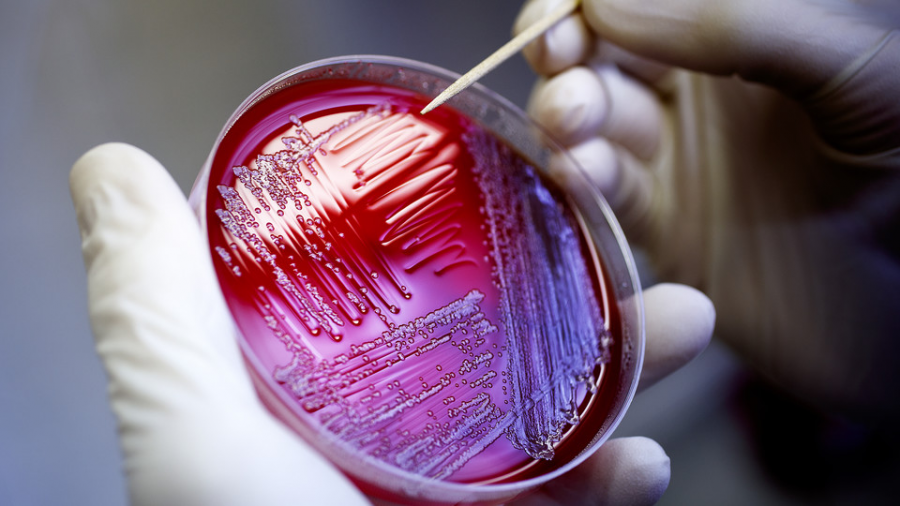The Rise of E. coli Outbreaks
January 2, 2019
It was supposed to be a nice dinner. Caesar salad with hearty romaine lettuce and beautifully grilled chicken. But as the days pass, you can’t leave your bed. The constant stomach pains, the burning fever, the dehydration all render you immobile. What was wrong?
Before another wave of nausea could overtake you, a simple Google search held the answer to your problems.
It was an E. coli infection, more commonly known as food poisoning.
What is E. coli?
E. coli, or Escherichia coli, is a type of bacteria that is often found residing within human and animal intestines. This bacteria comes in many forms, with dozens of different strains. Although they are believed to be harmful, most of the E. coli strains are harmless and can even be beneficial for humans. This bacteria helps humans absorb essential vitamins from foods within the digestive tract, such as Vitamin K. It is because of E. coli that people can live normal and healthy lives.
Despite this, there are a number of E. coli strains that can be infectious and can lead to illness. One dangerous strain, identified by the CDC as E. coli 0157: H7, can colonize, spread, and infect a person’s intestines.
These microorganisms can greatly impact a person’s body by producing a toxin known as Shiga Toxin. The toxin can cause E. coli to attach to cells within the intestines and even damage them. This can cause foodborne illnesses that can eventually lead to food poisoning or severe infections.
According to the CDC, common symptoms from an E. coli infection include abdominal pain, vomiting, dehydration, and hemorrhagic diarrhea. Severe cases of E. coli infections can lead to kidney failure, seizures, and death. While not all of these symptoms may appear immediately after consuming food with harmful E. coli strains, it is important to be wary of the foods consumed and where they came from.
How does E. coli contaminate food?
Being conscious of safe foods can be difficult. In the past few years, there have been multiple E. coli outbreaks that have impacted the nation and have left dozens hospitalized. Food chains such as Chipotle, Wendy’s, and Federico Mexican Food have all been linked to certain outbreaks. And in November 2018, there have been over 40 cases linked to romaine lettuce contaminated with E. coli.
With the number of E. coli cases on the rise this year, it stands to question why there are so many outbreaks.
One possible explanation could be related to how restaurants and companies sanitize their food. These products could be grown in areas where farmers do not wash their hands, other wildlife is present, or when manure is evident in the environment. And while companies claim to pre-wash their produce, there is still the risk of contamination through workers or machinery.
Food products could also be contaminated with E. coli during the slaughtering process, in which the carcass is infected by the animal’s intestines. While various health organizations and the government have made great strides to prevent contamination, it is a fairly common occurrence for food to cause an outbreak. In 2015, the United States Department of Agriculture had to recall around 21.1 million pounds of meat products that were contaminated with various foodborne illnesses, including E. coli.
How many cases or outbreaks have there been in 2018?
According to the CDC, there have been three major E. coli outbreaks in 2018 that caused over 270 people to be infected. Of those people, six deaths were reported and 28 people developed hemolytic uremic syndrome, a serious condition that results in kidney failure.
Two of these outbreaks have been related to romaine lettuce. Both have been identified to have originated from the Southwest, but investigators believe they have narrowed down the location of the second romaine lettuce outbreak to California.
Although the number of cases in this outbreak is significantly less than the first outbreak of this year, the CDC is urging that consumers do not buy romaine lettuce to avoid an E. coli infection.
The cause of this outbreak has also not been identified, but it is possible that this outbreak was the result of unsanitary environments. The process of harvesting, packaging, and transporting could have caused a breeding ground for the E. coli strains within the romaine lettuce.
How can E. coli infections be avoided?
Harmful forms of E. coli can be present in a number of foods and beverages. Foods like ground beef, raw fish, raw vegetables and fruits, and unpasteurized dairy products and beverages can all possibly host strains of E. coli. These foods, which may not be produced in sanitary environments, can be easily contaminated, and, if not prepared properly, can lead to illnesses.
There are many ways to avoid an E. coli infection. Keeping a clean environment while cooking aids in the process. This includes using disinfectants to clean surfaces around raw foods as well as using clean utensils. Additionally, washing fruits and vegetables won’t completely remove bacteria and E. coli, but it can help prevent serious infections and illnesses. Fully cooking meat products can greatly change if a person receives food poisoning or not as well.
While avoiding E. coli entirely is difficult, taking the necessary steps to avoid infections and food poisoning can ensure a safe and enjoyable holiday season.

